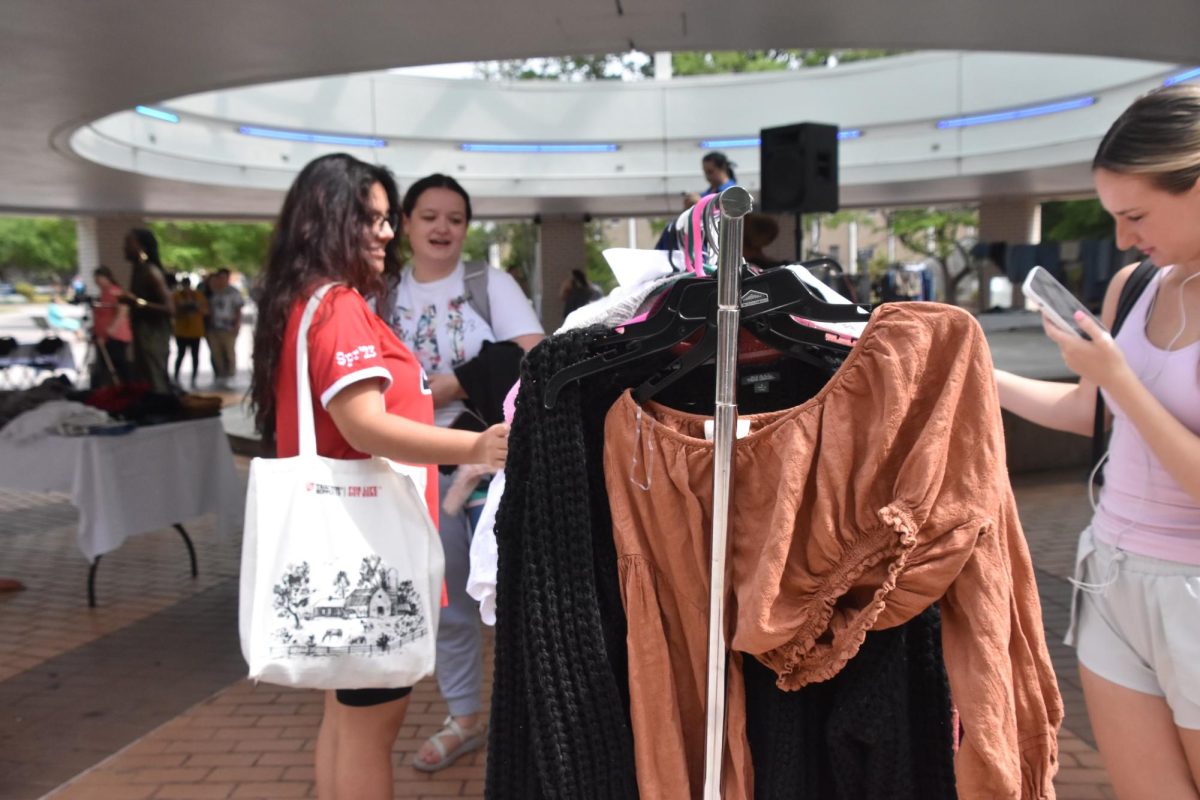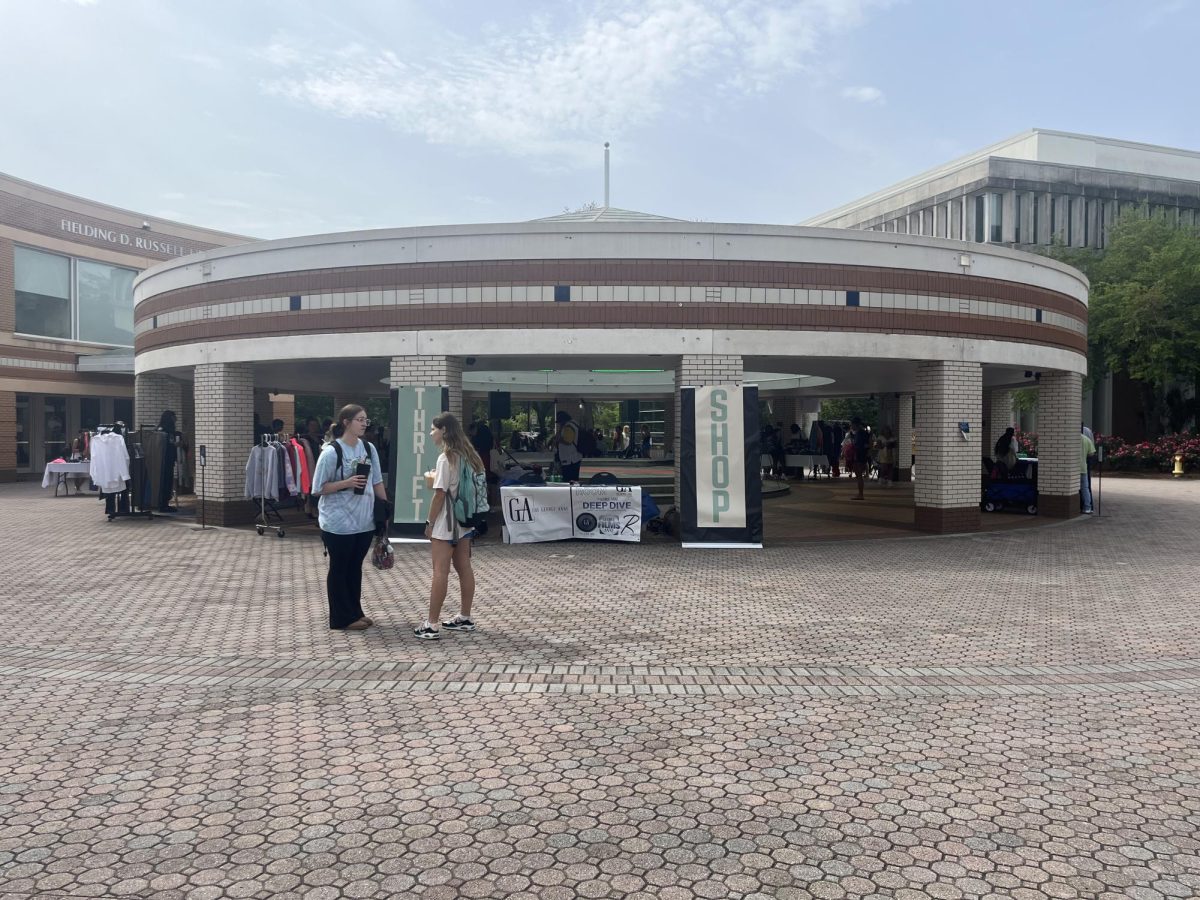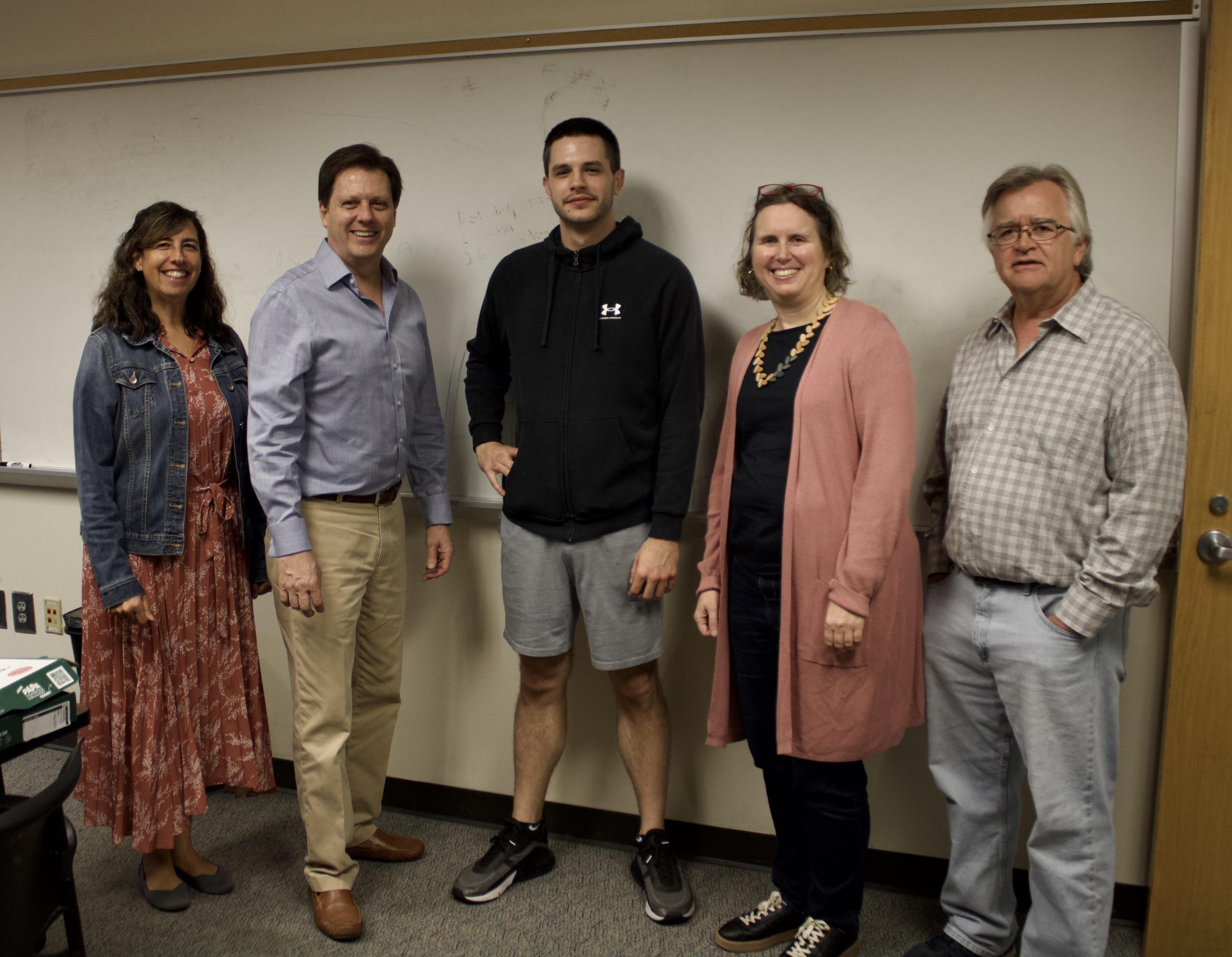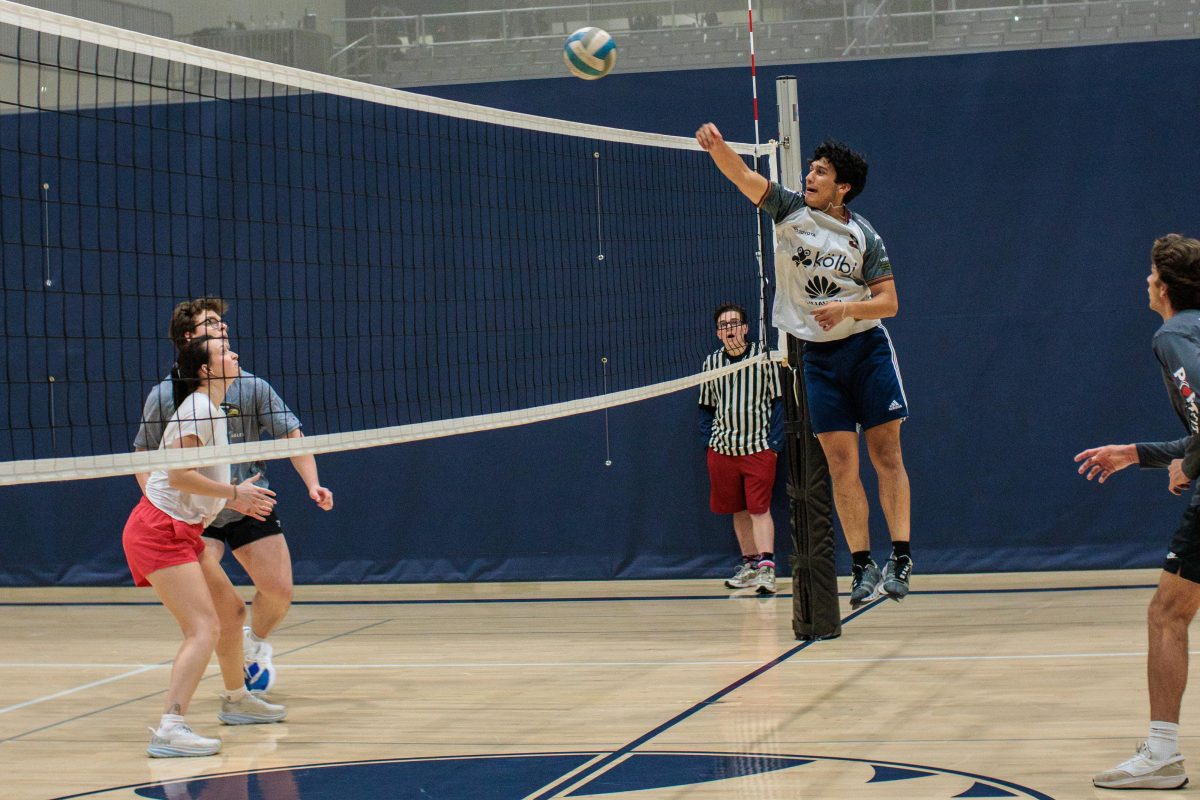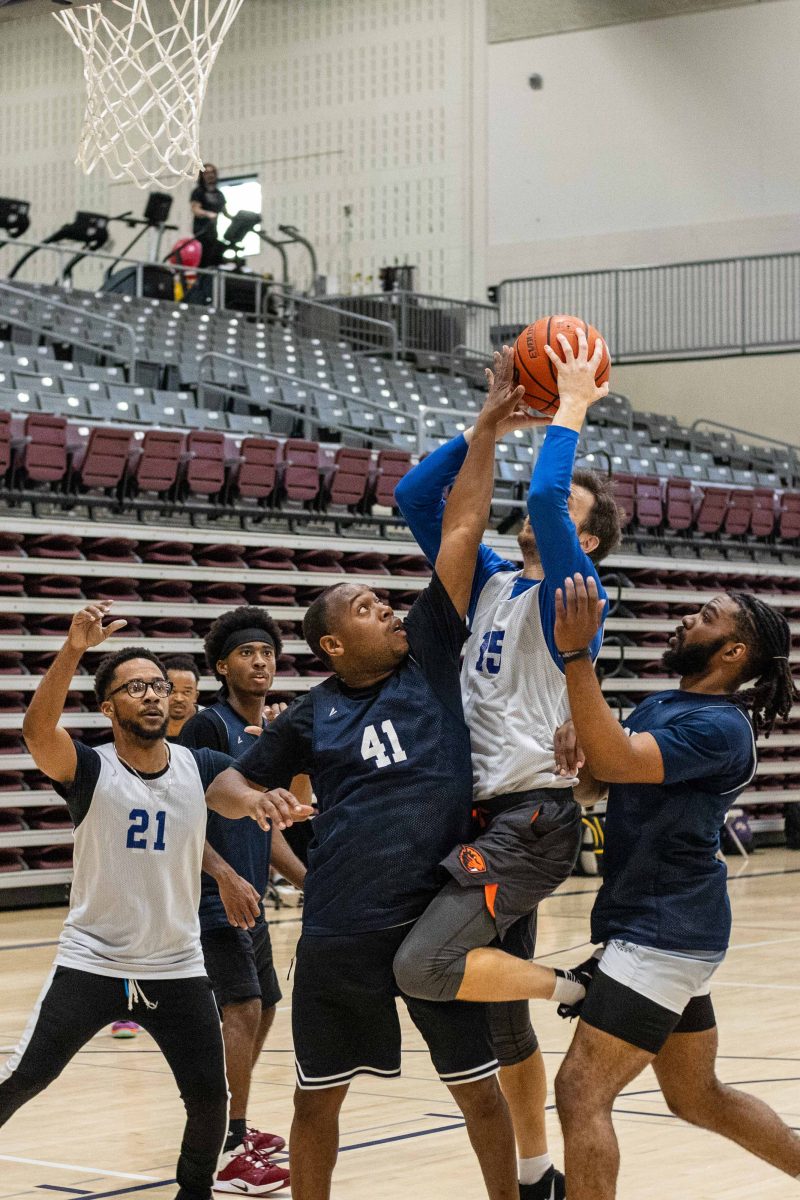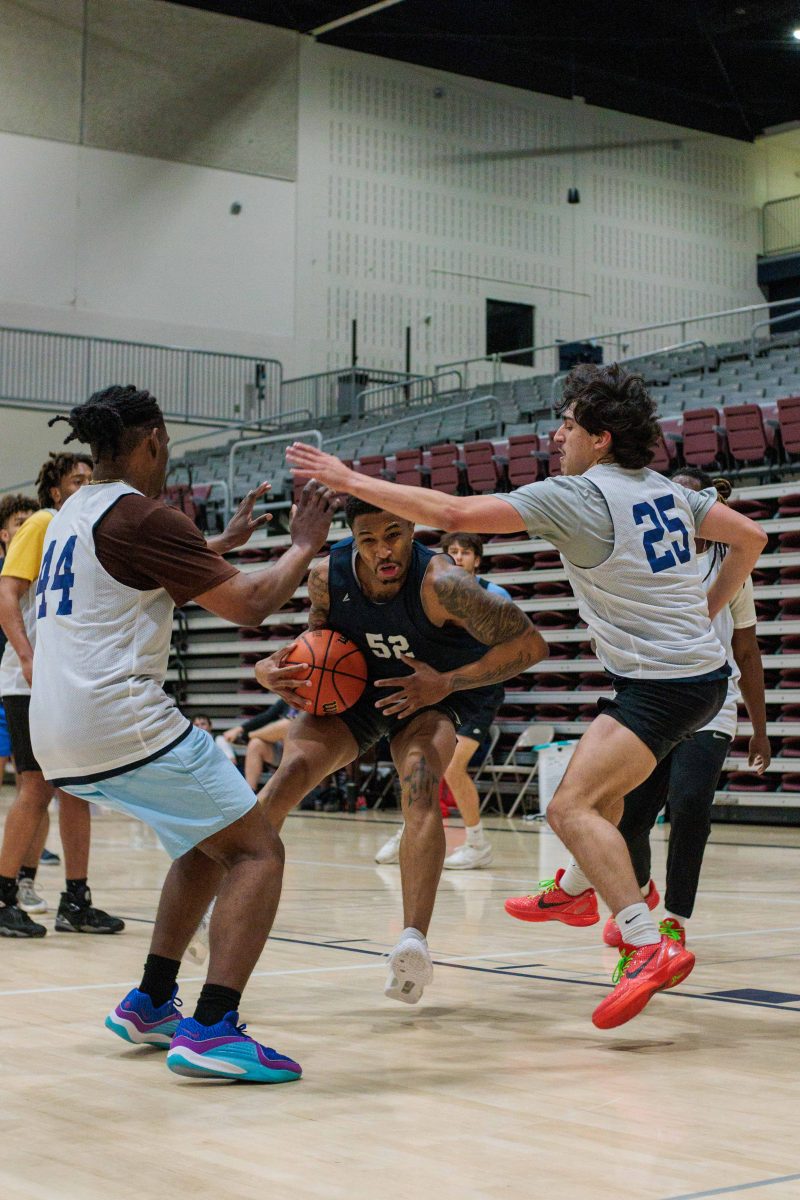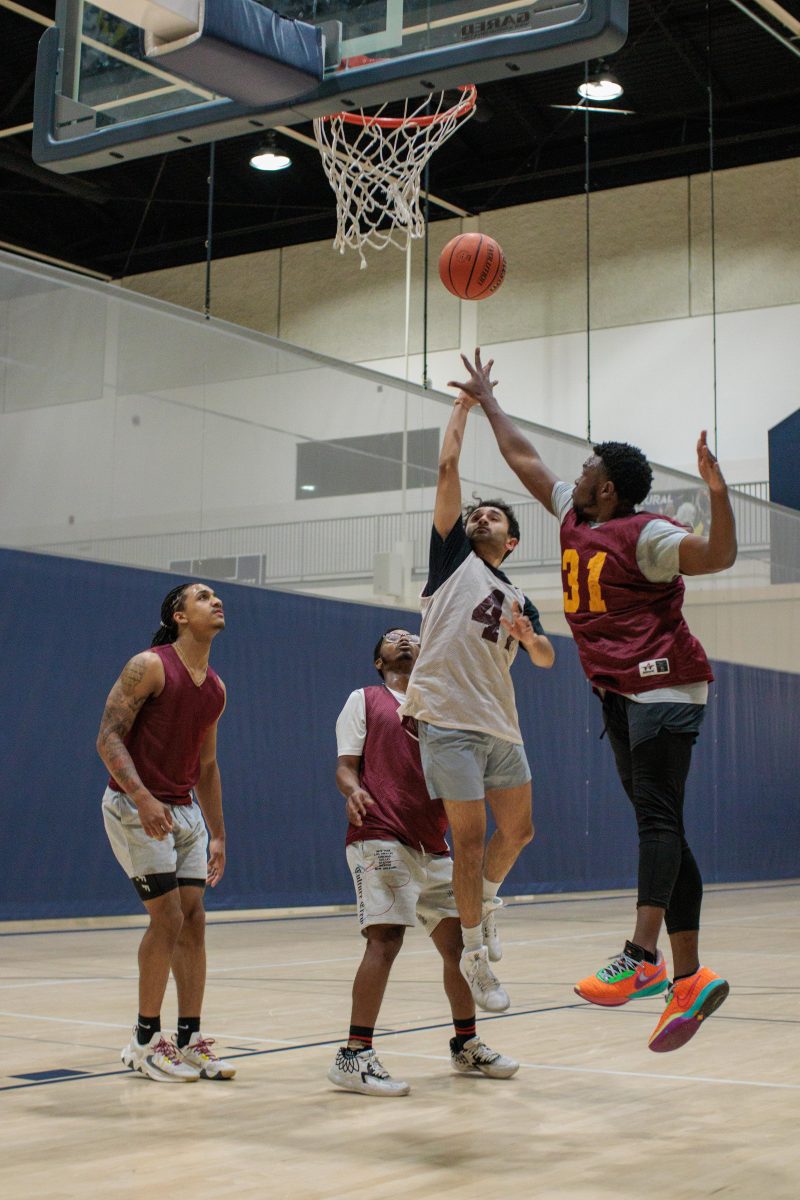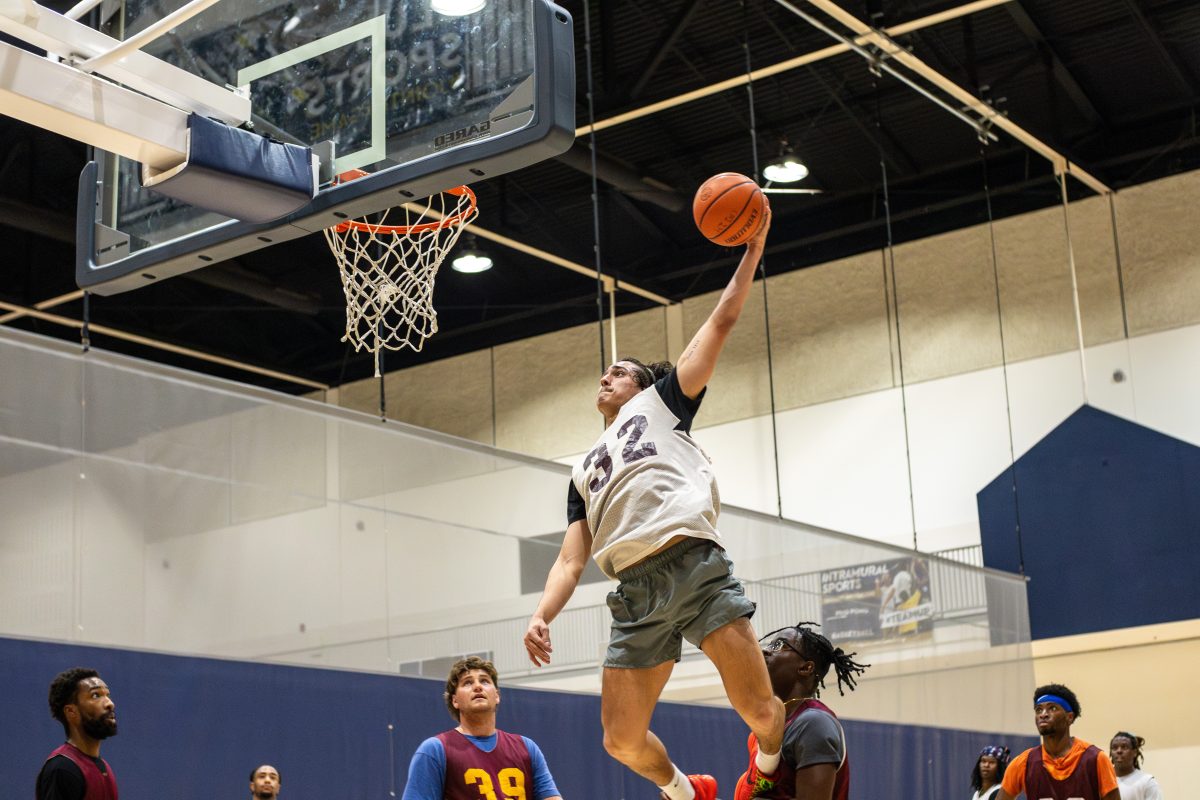Elizabeth Rhaney, Photo Editor
Art lovers filled the Neises Auditorium at the Jepson Center for the Arts on August 14 to hear artist Whitfield Lovell discuss his exhibition.
Lovell sat down with Telfair Museums’ Director Lisa Grove to talk about his career and Deep River installation. He talked about his childhood first. He grew up in Bronx, NY, and was interested in art from a young age.
His father was a self-taught photographer and Lovell often helped him with his work. Lovell studied several fields of visual art including photography, sculpture and printmaking. While visiting El Museo del Prado in Spain, he was inspired by a Velázquez painting.
His works in the Jepson are mixed media drawings of African Americans from the Civil War to the Civil Rights movement. The drawings are based on vintage photographs of anonymous people. His interest in vintage photography goes back to his childhood when he looked through his father’s and grandmother’s photo collections.
He said he wondered what the people were thinking as they had their photo taken – were they thinking of who they would give their photos to or were they trying to leave behind a record of their existence? When he asked his grandmother she said simply, “We just did it.”
He then talked about his interest in objects, which also goes back to his grandmother. He often went with her to the flea market.
“Objects are somehow imbued with spiritual power because someone used them,” he said. He said the objects add energy to a piece when they are paired with the right drawing or drawings.
One of his mixed media pieces is titled Autour du Monde (Around the World) – three large wooden panels, each with a drawing of young men in uniform, are placed against a wall with globes of various sizes in front of or attached to the panels.
The globes are outdated, with the Soviet Union marked instead of Russia and French West Africa instead of the Ivory Coast. Rust has settled in on most of them. The panels have holes and cracks. Both the men and the objects look weathered.
Lovell said the objects he uses are not meant to be literal, but metaphoric. He encouraged the audience to not read the most obvious association, but to focus on what the objects symbolize.
Sometimes he finds an object that speaks to him first and then he looks for the right drawing for it. At other times he finds a photograph and creates the drawing first and then looks for a object. He visited some antique stores in Savannah to find objects for future pieces.
The last part of the conversation was about the Deep River exhibit, which is on the third floor of the Jepson. The piece was inspired by contraband camps in Tennessee set up during the Civil War, where runaway slaves were given asylum. The word “contraband” was used for runaway slaves who helped the Union soldiers.
Lovell wanted to incorporate the lyrics from his favorite spiritual, Deep River, into the installation. He said the words “Deep river, my home is over Jordan. Deep river, I want to cross over to campground” kept coming up in his mind.
The Deep River installation covers an entire room. Wooden discs of various sizes called tondos are placed in a circular pattern around the room. The smaller tondos have portraits of people from the neck up while larger ones have full body portraits.
Video of steadily-moving waves are projected against the wall. The projection bounces off of everything in the room including the tondos and the viewers as they walk around. There is a sensation of wading through water as the viewer walks across the room.
A large mound of dirt sits in the middle of the room. Everyday objects are carefully placed in the mound like a small banjo without strings, a rusted trumpet, and glass bottles. Lovell said he shaped the mound like a sculptor. He placed it there to allude to the camp grounds.
Lovell wanted the viewer to think about what freedom means to them as they walked through Deep River. “The quest for freedom is something we all have to be conscious and aware of,” he said. “No one’s free unless we’re all free and it’s an ongoing journey.”
After the talk the audience went to view the exhibit. Amiri Farris, an artist and instructor at USC Beaufort, said, “It’s always good to hear what the artist had in mind and their perspective.”
Reynold Verret, provost and a professor of Chemistry and Biochemistry at Savannah State University, said that Lovell’s work reminded him of “memories that had been frozen.” He said there is a strong connection between art and science. “Science is an art,” he said.
Deep River will be open until February 1, 2015 at the Jepson. Other events connected to the exhibit include a Performance Blank Page Poetry- Words and Shadows “If Ever These Rivers Should Speak” on October 16 and Free Family Day on November 1.
For more information on Whitfield Lovell and the Deep River exhibit visit telfair.org/deepriver.

